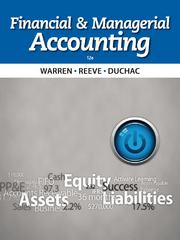Question
The purchase premium is usually defined in the popular press as the excess of the offer price over the target firm's share price immediately prior
The purchase premium is usually defined in the popular press as the excess of the offer price over the target firm's share price immediately prior to the deal announcement date. A more accurate estimate of the purchase premium includes the sum of the increase in the target firm's share price prior to the announcement (i.e., the run-up)plus the excess of the offer price over the run-up (i.e,the markup).
Match the following factors that affect the purchase price premiums:
|
|
What are the possible options for a failing firm with a liquidation valuegreater than the sale or going-concern value?(check all correct answers)
| A. | Seeks bankruptcy protection under Chapter 11 | |
| B. | Liquidates under Chapter 7 | |
| C. | Reaches out-of-court settlement with creditors | |
| D. | Merges with another firm |
The purchasing power parity theory states that the percentage difference in the forward rate relative to the spot rate should over time equal the differences in expected inflation rates between countries.
True
False
What bankruptcy law makesit more difficult for some consumers to file bankruptcy under Chapter 7?
| A. | DOJ | |
| B. | BAPCPA | |
| C. | International Trade Law | |
| D. | US Bankruptcy Code |
Bankruptcy is a state-level legal proceeding designed to protect the technically or legally insolvent firm from lawsuits by its creditors until a decision can be made to shut down or to continue to operate the firm.
True
False
Step by Step Solution
There are 3 Steps involved in it
Step: 1

Get Instant Access to Expert-Tailored Solutions
See step-by-step solutions with expert insights and AI powered tools for academic success
Step: 2

Step: 3

Ace Your Homework with AI
Get the answers you need in no time with our AI-driven, step-by-step assistance
Get Started


